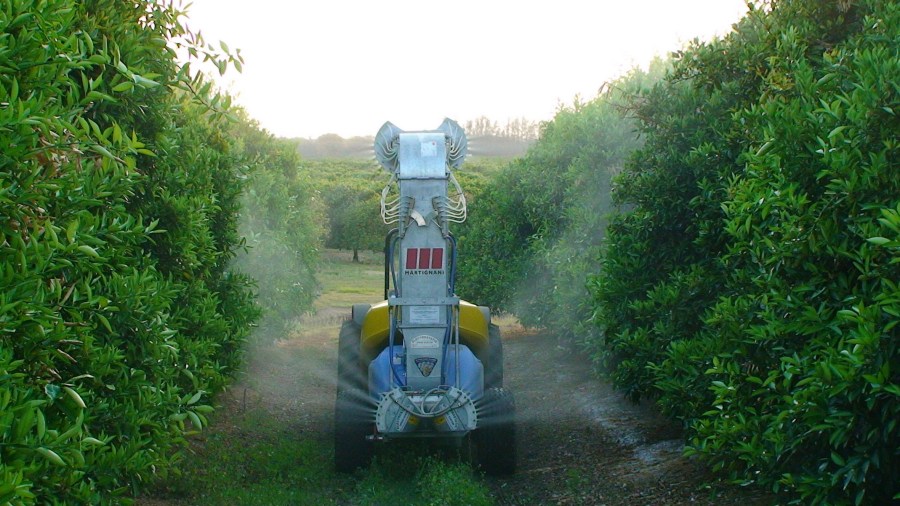The Tow and Blow wind machine from New Zealand has now found a home in UK fruit farms and vineyards following success on the continent.
The basic idea is to keep the air moving. It is highly effective in combating freezing temperatures, it’s easy to use by one person, easy to set up, easy to move with a tractor or four wheel drive, has frugal running costs at five to six litres of diesel per hour, has user friendly computer programming for auto start and stop at the operator’s preferred max and min air temperature levels.
The air flow direction can be set to the user’s wishes as the fan sits at the end of a boom which can be set to rotate 360 degrees, oscillate or remain static. On average one machine can cover up to six hectares depending on location. Multiple machines can be set to complement each other’s air flow over larger areas.
The recent models have quiet running 23 horsepower diesel engines directly coupled to the fan via a centrifugal clutch. Other features have been improved to obtain increased air flow and make the machine easier to use.
The machines have also been used in warmer climates to cool the fruit. A water misting nozzle in front of the fans helps to reduce sunburn and splitting of the fruit and there are reports that it can help with colouring.
Excellent coverage
Electrostatic sprayers were introduced to the UK two years ago by Vitifruit Equipment after extensive research and a fact finding visit to the Martignani factory in Italy.The sprayers come in many shapes and sizes but all are built for professional vineyards, orchards and fruit growers.
As with traditional sprayers a fan delivers the spray to target, however spraying efficiency is greatly enhanced by the electrostatic charge applied to the droplets as they enter into the airflow. The negative charge applied is opposite to the positive charge of the plant, so the droplets are drawn to the fruit and vegetation in a similar way to iron filings to a magnet. The result is excellent coverage resulting in better disease control, improved fruit quality, reduced chemical use and low volumes of water per hectare.




